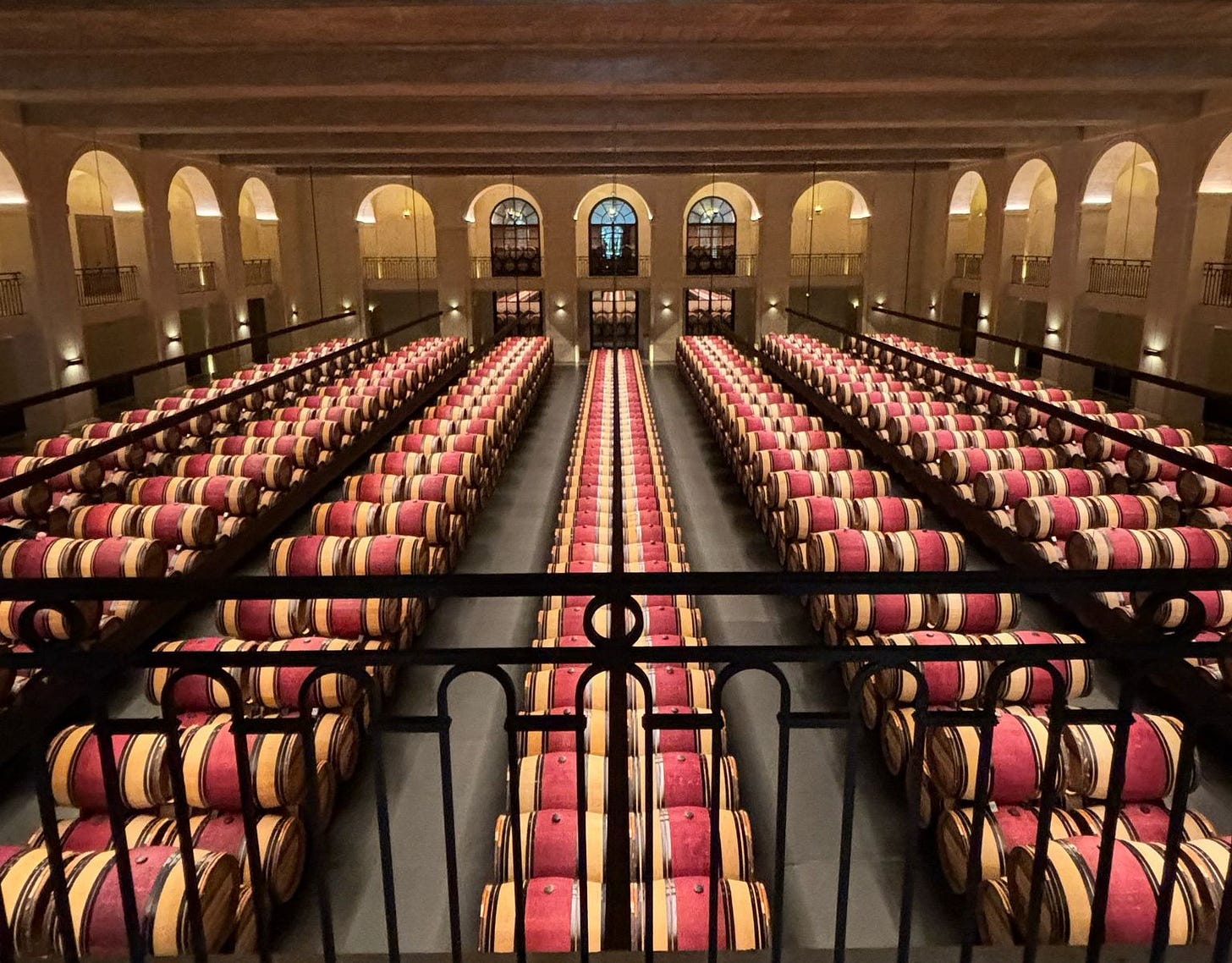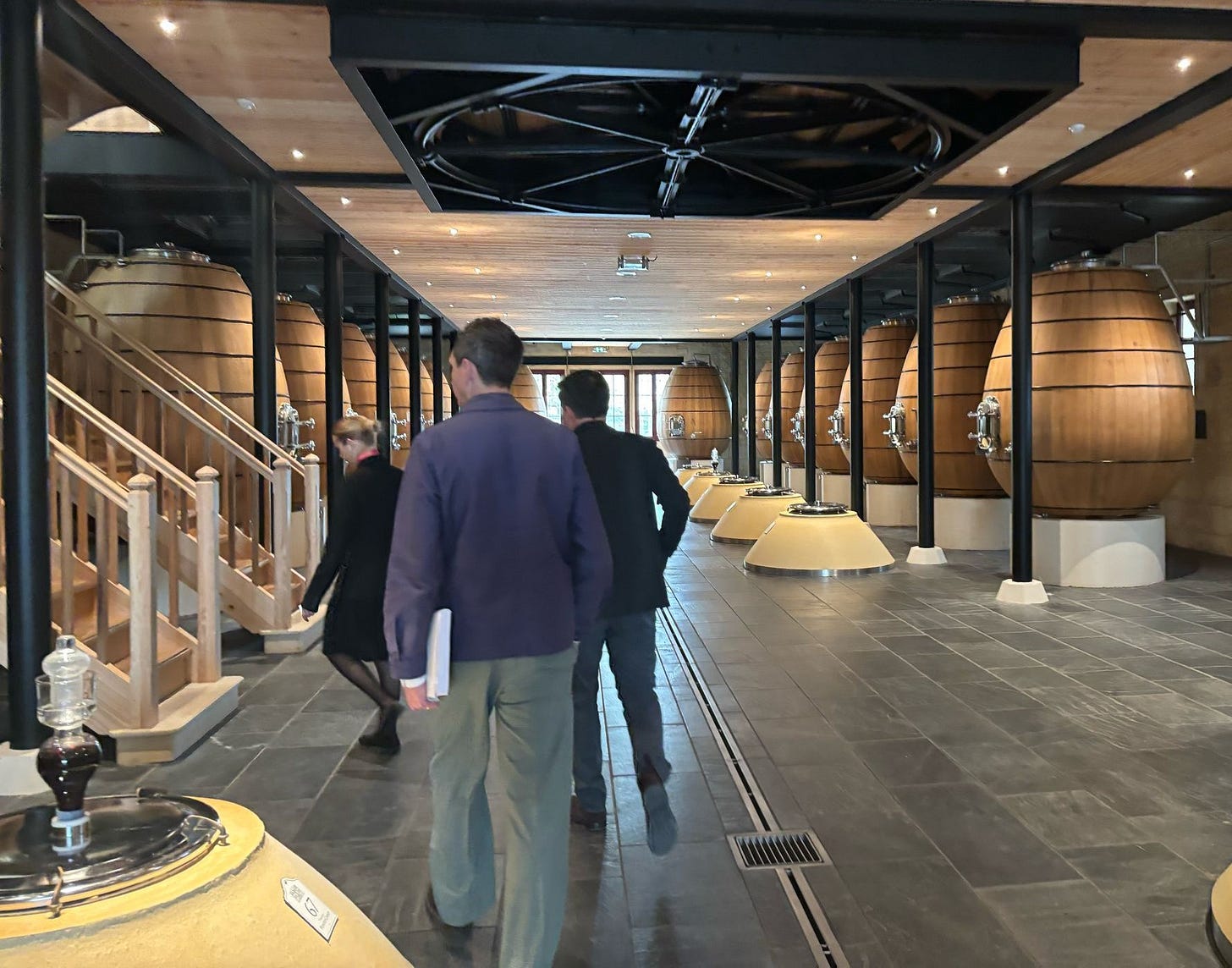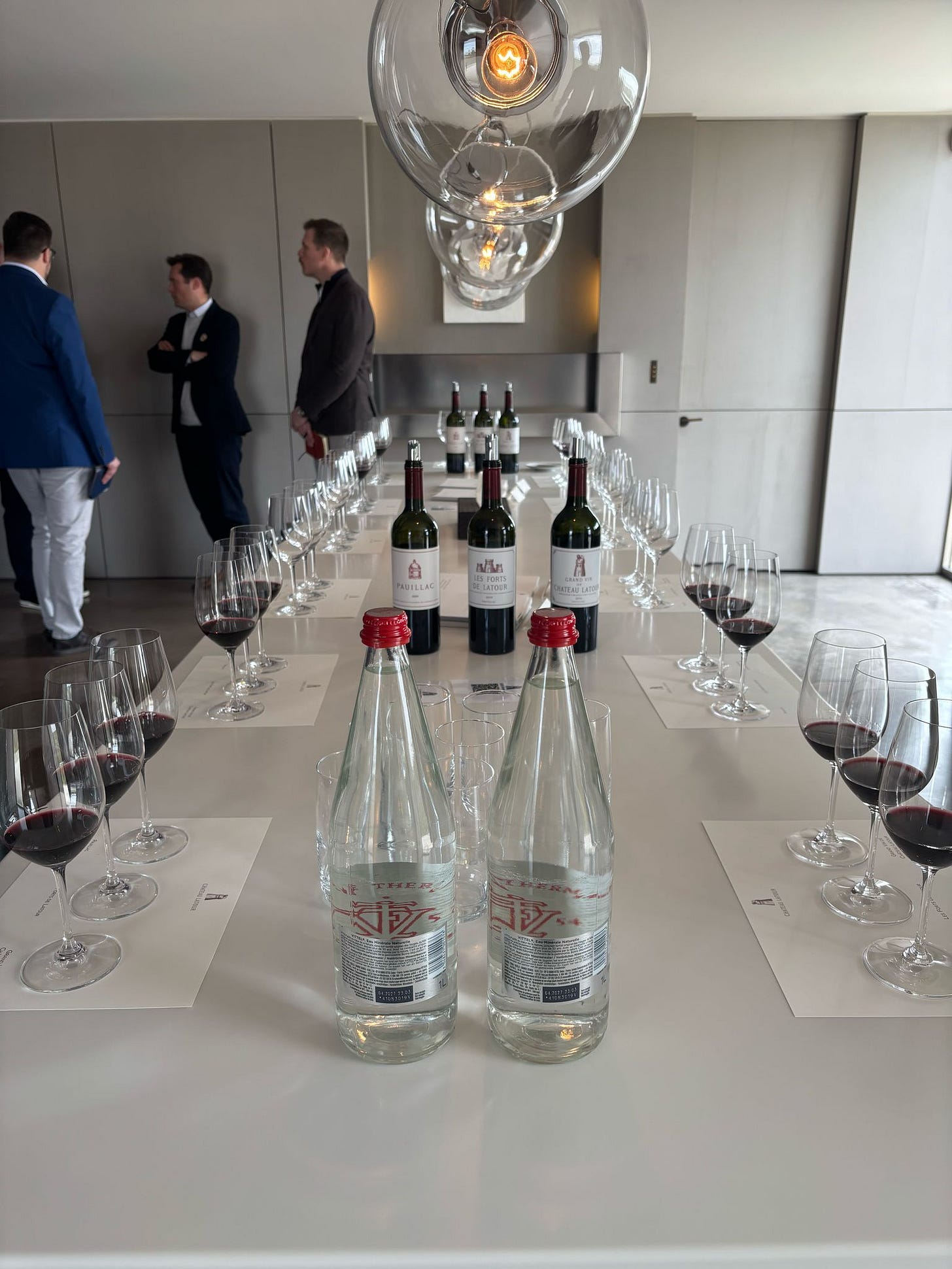Bored-eaux
In which Paolo-Luca Rossi reports from 'En Primeur' week on the latest 2024 vintage. Rotten, wet, alcoholic: not just how he felt upon returning...
So many complain it’s out of fashion, out of touch and quite frankly, boring. It's a forgivable opinion given that there hasn’t been an attainable price point in high-end Bordeaux wine since the Covid 19 drinking boom and people now have less money to spend. Natty wines are the new orange, and young people just don’t find wine interesting, let alone Bordeaux.
I used to agree. I never ‘got’ Bordeaux. No matter how much some balding toff in a gilet, chewing a Cohiba and raving about his hunting weekend with the ‘chaps’ went on about the wonders of a “good old-boys" Claret’, I just didn’t get it.
And then I did. It took just one bottle of Léoville Barton 2014, shared with my father over a carvery trolley as we talked about life and dreams, for me to finally understand Bordeaux. It provided an astounding concentration and depth of flavour that I hadn’t yet experienced and sparked some life into this lowly oenophile. It was decidedly youthful and danced on my tongue.
Yet the problem Bordeaux and most fine wine has is simple; it’s too expensive, too specialist and too old-fashioned. After almost 3 years of market corrections, an economic backdrop of tariffs and sanctions, war and inflation - as well as weather that saw rainfall at fruit set and at harvest - this year’s ‘en primeur’ campaign will be challenging both in terms of quality and pricing. Add to that the general feeling that Bordeaux is dated and that young people are drinking less: you either have a recipe for disaster or dare I say it, opportunity.
Pardon my French
So, what the fuck is En Primeur? En Primeur meaning ‘in first’ is a wine futures market that developed out of the differing yet complementary needs between the Chateaux, the wine merchants, and the brokers. The wine can be traded whilst still in barrel, allowing merchants to purchase their [not-yet-existent] bottles at a discount. The Chateaux benefited from cash flow to pay for staff, investment and crop management, the merchants got exclusive access, generous discounts, and distribution power and the private clients, who bought early for a discount, could either enjoy exceptional wine for less or invest it later for more. It was a win-win-win.
But then came the Covid years and bored house-bound drinkers fuelled high levels of demand which naturally drove speculation in the market and a bubble was formed. This encouraged a lot of producers to increase the prices at which they released and up and up it has continued to go. That bubble has since burst, and now we are at a point where some vintages in the market sit below their original release price. Vintages from 2017 onwards are suffering, with 2021 offering the largest discounts. The problem here is that these wines are only ready to drink after 10+ years in bottle, so if they are cheaper down the line (especially when factoring in storage, insurance, and opportunity cost) then it makes no sense to buy now. In the end those that bought “now” have become the “suckers” later and so punters have lost faith in the system.
What we need is a vintage released at the lowest available price on the market. This can both reinstate some faith in the system and potentially invite a new generation of wine buyer into the game.
A Tale of Two Vintages
But enough about the business of Bordeaux and onto the actual wines. Anyone lucky enough to be in Bordeaux during En Primeur week can expect to sample numerous wines and I certainly made a decent dent in them as the Chateaux tentatively offered up their latest plonk to us.
Most of the producers we met with spoke of 2024 being a challenging vintage. Those who put the work in and made the appropriate investments in the vineyard produced some fantastic wines. Those who didn’t: it showed. From a weather standpoint, the rain came at the worst times. Early rains in the growing season disrupted fruit set and led to some ripening issues later and then as harvest approached, so did early autumn storms. It left producers with a difficult choice; either they harvest early and produce some ‘greener’ wines with flavours of green pepper and grass or leave the grapes on the vine to ripen in the wet environment, risking losing a huge amount of crop to rot but achieving ripeness and notable fruit characteristics.
Best of a bad bunch
The whites did well overall showing strong aromatics and wonderful freshness. My only reproach was that a lot of the whites felt a little flabby and were not quite as lively as I’d have liked. My standout for the white line up was the Chateau Suduiraut, Vieilles Vignes Grand Vin Blanc Sec. This showed an open bouquet – floral honeysuckle, apple and lemon peel paired with a vibrant and lively acidity.
On the other hand, the reds were very split down the middle. Those that put in the work were fantastic: Pichon Baron, Montrose, Calon Segur, Capbern (which should show tremendously good value depending on release price), Petrus, Le Pin, Cheval Blanc, Carmes Haut Brion all had expressive and concentratedbouquets of fresh fruit and grippy tannic structures. These were some true winners of this difficult year.. Chateau Margaux really shone and displayed a great elegance, with a beast hiding behind it – ready to come forward with a decade or so in bottle. There were also the not-so-great that just could not escape the vintage; Armailhac, Ducru-Beaucaillou and [dare I say based on published scores!] Ausone being the main culprits.
So there you have it; 2024 is a vintage of volatile quality and low yields. Surely the chateaux cannot continue to ignore tthe apathy from both professionals in the trade and an emerging generation less interested in wine. This feels like a pivotal moment for a factory reset on an outdated system. But, the question remains: Will they listen to me?







